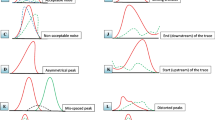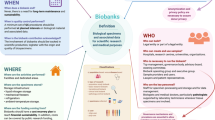Abstract
With growing cancer morbidity, forensics cases in which archived tumour tissues can be used as biological samples are increasing, and an effective method to identify the body source of tumour tissues is needed. Single nucleotide polymorphisms (SNPs) may be a promising biomarker to identify the source of tumour tissues because of their low mutation rate and small amplicon size. Next-generation sequencing techniques offers the ability to detect hundreds of SNPs in a single run. The Precision ID Identity Panel (Thermo Fisher Scientific, Waltham, MA, USA) detects 90 autosomal SNPs for individual identification and 34 lineage-informative SNPs on Y chromosome using the Ion PGM system (Thermo Fisher Scientific). In this study, we evaluated performance of the panel for individual identification of tumour tissues. One hundred and fifty pairs of tumour tissues and corresponding normal tissues were analysed. Loss of heterozygosity was detected only in tumour tissues. The identity-by-state (IBS) scoring system was adopted to identify the body source of tumour tissues. The IBS score, as well as the number of loci with 2 alleles (A2), 1 allele (A1) and 0 alleles (A0) shared, were analysed within each tumour-normal pair, unrelated individual pairs, parent–offspring pairs and full-sibling pairs. According to the probability distribution, threshold of A2 in the range of 69 to 89 could achieve accuracy > 99% in identifying the source of tumour tissues. Thus, we developed a new strategy (process and criteria) to identify the source of tumour tissues that could be used in practice.




Similar content being viewed by others
References
Li C, Zhao S, Zhang S, Li L (2010) Source identification of gastric cancer tissue with discriminatory analysis. Fa Yi Xue Za Zhi 26:100–103
Sun L, Li S, Fu G, Bai M, Dong C, Yang B, Chen P, Wang Z, Fu L, Cong B (2017) Mutation analysis of autosomal and X chromosomal STR in gynecologic and breast cancer. Chin J Forensic Med 32(350–353):358
Sun L, Li S, Fu G, Zhang X, Wang Z, Fu L, Cong B (2018) A study on mutations of autosomal, X and Y chromosomal STR in malignant tumor tissues. Chin J Forensic Med 33:471–475
Sun L, Shi K, Tan L, Zhang Q, Fu L, Zhang X, Fu G, Li S, Cong B (2017) Analysis of genetic polymorphisms and mutations at 19 STR loci in Hebei Han population. Forensic Sci Int Genet 31:e50–e51
Liu Y, Li L, Li C, Zhao Z (2009) Allelic alterations of STRs in archival paraffin embedded tissue as DNA source for paternity testing. Forensic Sci Int Genet Suppl Ser 2:12–13
Hunt JL, Swalsky P, Sasatomi E, Niehouse L, Bakker A, Finkelstein SD (2003) A microdissection and molecular genotyping assay to confirm the identity of tissue floaters in paraffin-embedded tissue blocks. Arch Pathol Lab Med 127:213–217
Reich DE, Schaffner SF, Daly MJ, McVean G, Mullikin JC, Higgins JM, Richter DJ, Lander ES, Altshuler D (2002) Human genome sequence variation and the influence of gene history, mutation and recombination. Nat Genet 32:135–142
Wang Q, Fu L, Zhang X, Dai X, Bai M, Fu G, Cong B, Li S (2016) Expansion of a SNaPshot assay to a 55-SNP multiplex: assay enhancements, validation, and power in forensic science. Electrophoresis 37:1310–1317
Freire-Aradas A, Fondevila M, Kriegel AK, Phillips C, Gill P, Prieto L, Schneider PM, Carracedo A, Lareu MV (2012) A new SNP assay for identification of highly degraded human DNA. Forensic Sci Int Genet 6:341–349
Einaga N, Yoshida A, Noda H, Suemitsu M, Nakayama Y, Sakurada A, Kawaji Y, Yamaguchi H, Sasaki Y, Tokino T, Esumi M (2017) Assessment of the quality of DNA from various formalin-fixed paraffin-embedded (FFPE) tissues and the use of this DNA for next-generation sequencing (NGS) with no artifactual mutation. PLoS One 12:e0176280
Guyard A, Boyez A, Pujals A, Robe C, Tran Van Nhieu J, Allory Y, Moroch J, Georges O, Fournet J-C, Zafrani E-S, Leroy K (2017) DNA degrades during storage in formalin-fixed and paraffin-embedded tissue blocks. Virchows Arch 471:491–500
Watanabe M, Hashida S, Yamamoto H, Matsubara T, Ohtsuka T, Suzawa K, Maki Y, Soh J, Asano H, Tsukuda K, Toyooka S, Miyoshi S (2017) Estimation of age-related DNA degradation from formalin-fixed and paraffin-embedded tissue according to the extraction methods. Exp Ther Med 14:2683–2688
Miller JK, Buchner N, Timms L, Tam S, Luo X, Brown AM, Pasternack D, Bristow RG, Fraser M, Boutros PC, McPherson JD (2014) Use of Sequenom sample ID plus(R) SNP genotyping in identification of FFPE tumor samples. PLoS One 9:e88163
Huijsmans R, Damen J, van der Linden H, Hermans M (2007) Single nucleotide polymorphism profiling assay to confirm the identity of human tissues. J Mol Diagn 9:205–213
Pontes ML, Amigo OM, Fondevila M, Porto MJ, Medeiros R (2015) Analysis of autosomal SNPs in paraffin-embedded tissue samples: two cases. J Forensic Invest 3:1–4
Chen X, Lu D, Zhang J, Song F, Luo H, Ren Z, Wei W, Hou Y (2015) Identification of the mislabeled breast cancer samples by mitochondrial DNA haplotyping. J Forensic Sci Med 1:133–139
Tully G, Sullivan KM, Nixon P, Stones RE, Gill P (1996) Rapid detection of mitochondrial sequence polymorphisms using multiplex solid-phase fluorescent minisequencing. Genomics 34:107–113
Livak K (1999) Allelic discrimination using fluorogenic probes and the 5′ nuclease assay. Genet Anal 14:143–149
Sapolsky RJ, Hsie L, Berno A, Ghandour G, Mittmann M, Fan JB (1999) High-throughput polymorphism screening and genotyping with high-density oligonucleotide arrays. Genet Anal 14:187–192
Pakstis A, Speed W, Fang R, Hyland F, Furtado M, Kidd J, Kidd K (2010) SNPs for a universal individual identification panel. Hum Genet 127:315–324
Sanchez J, Phillips C, Børsting C, Balogh K, Bogus M, Fondevila M, Harrison C, Musgrave-Brown E, Salas A, Syndercombe-Court D, Schneider P, Carracedo A, Morling N (2006) A multiplex assay with 52 single nucleotide polymorphisms for human identification. Electrophoresis 27:1713–1724
Karafet TM, Mendez FL, Meilerman MB, Underhill PA, Zegura SL, Hammer MF (2008) New binary polymorphisms reshape and increase resolution of the human Y chromosomal haplogroup tree. Genome Res 18:830–838
Guo F, Zhou Y, Song H, Zhao J, Shen H, Zhao B, Liu F, Jiang X (2016) Next generation sequencing of SNPs using the HID-ion AmpliSeq identity panel on the ion torrent PGM platform. Forensic Sci Int Genet 25:73–84
Zhang S, Bian Y, Zhang Z, Zheng H, Wang Z, Zha L, Cai J, Gao Y, Ji C, Hou Y, Li C (2015) Parallel analysis of 124 universal SNPs for human identification by targeted semiconductor sequencing. Sci Rep 5:18683
Li R, Zhang C, Li H, Wu R, Li H, Tang Z, Zhen C, Ge J, Peng D, Wang Y, Chen H, Sun H (2018) SNP typing using the HID-ion AmpliSeq identity panel in a southern Chinese population. Int J Legal Med 132:997–1006
Buchard A, Kampmann ML, Poulsen L, Borsting C, Morling N (2016) ISO 17025 validation of a next-generation sequencing assay for relationship testing. Electrophoresis 37:2822–2831
Liu J, Wang Z, He G, Zhao X, Wang M, Luo T, Li C, Hou Y (2018) Massively parallel sequencing of 124 SNPs included in the precision ID identity panel in three east Asian minority ethnicities. Forensic Sci Int Genet 35:141–148
Gettings KB, Kiesler KM, Vallone PM (2015) Performance of a next generation sequencing SNP assay on degraded DNA. Forensic Sci Int Genet 19:1–9
Bruijns B, Tiggelaar R, Gardeniers H (2018) Massively parallel sequencing techniques for forensics: a review. Electrophoresis 39:2642–2654
Xi KX, Wen YS, Zhu CM, Yu XY, Qin RQ, Zhang XW, Lin YB, Rong TH, Wang WD, Chen YQ, Zhang LJ (2017) Tumor–stroma ratio (TSR) in non-small cell lung cancer (NSCLC) patients after lung resection is a prognostic factor for survival. J Thorac Dis 9:4017–4026
Wang K, Ma W, Wang J, Yu L, Zhang X, Wang Z, Tan B, Wang N, Bai B, Yang S, Liu H, Zhu S, Cheng Y (2012) Tumor–stroma ratio is an independent predictor for survival in esophageal squamous cell carcinoma. J Thorac Oncol 7:1457–1461
Robinson JT, Thorvaldsdottir H, Winckler W, Guttman M, Lander ES, Getz G, Mesirov JP (2011) Integrative genomics viewer. Nat Biotechnol 29:24–26
Thorvaldsdottir H, Robinson JT, Mesirov JP (2013) Integrative genomics viewer (IGV): high-performance genomics data visualization and exploration. Brief Bioinform 14:178–192
Presciuttini S, Toni C, Tempestini E, Verdiani S, Casarino L, Spinetti I, De Stefano F, Domenici R, Bailey-Wilson JE (2002) Inferring relationships between pairs of individuals from locus heterozygosities. BMC Genet 3:23
Excoffier L, Lischer HE (2010) Arlequin suite ver 3.5: a new series of programs to perform population genetics analyses under Linux and Windows. Mol Ecol Resour 10:564–567
Holsinger KE, Weir BS (2009) Genetics in geographically structured populations: defining, estimating and interpreting F(ST). Nat Rev Genet 10:639–650
Danjoux M, Guimbaud R, Al Saati T, Meggetto F, Carrère N, Portier G, Delsol G, Selves J (2006) Contribution of microdissection for the detection of microsatellite instability in colorectal cancer. Hum Pathol 37:361–368
Børsting C, Fordyce SL, Olofsson J, Mogensen HS, Morling N (2014) Evaluation of the Ion Torrent™ HID SNP 169-plex: a SNP typing assay developed for human identification by second generation sequencing. Forensic Sci Int Genet 12:144–154
Eduardoff M, Santos C, de la Puente M, Gross TE, Fondevila M, Strobl C, Sobrino B, Ballard D, Schneider PM, Carracedo A, Lareu MV, Parson W, Phillips C (2015) Inter-laboratory evaluation of SNP-based forensic identification by massively parallel sequencing using the ion PGM. Forensic Sci Int Genet 17:110–121
Daniel R, Santos C, Phillips C, Fondevila M, van Oorschot RAH, Carracedo Á, Lareu MV, McNevin D (2015) A SNaPshot of next generation sequencing for forensic SNP analysis. Forensic Sci Int Genet 14:50–60
Zhao S, Zhang S, Zhang N, Sun K, Que T, Zhao Z, Li C (2013) A new strategy for body source identification of tumor sample. Forensic Sci Int Genet Suppl Ser 4:e346–e347
Acknowledgements
We thank the patients for participating in this study and the Affiliated Fourth Hospital of Hebei Medical University. We thank Louise Adam, ELS(D), from Liwen Bianji, Edanz Editing China (www.liwenbianji.cn/ac) for editing the English text of a draft of this manuscript.
Funding
The study was supported by the National Natural Science Foundation of China (No. 81001351); Natural Science Foundation of Hebei province (No. H2015206454); the Hebei Graduate Student Innovation Fund Programs; Scientific Research and Development Foundation of Hebei Medical University (079).
Author information
Authors and Affiliations
Corresponding authors
Ethics declarations
Conflict of interests
The authors declare that they have no competing interests.
Additional information
Publisher’s note
Springer Nature remains neutral with regard to jurisdictional claims in published maps and institutional affiliations.
Rights and permissions
About this article
Cite this article
Sun, L., Liu, Q., Li, S. et al. A new strategy to confirm the identity of tumour tissues using single-nucleotide polymorphisms and next-generation sequencing. Int J Legal Med 134, 399–409 (2020). https://doi.org/10.1007/s00414-019-02216-9
Received:
Accepted:
Published:
Issue Date:
DOI: https://doi.org/10.1007/s00414-019-02216-9




